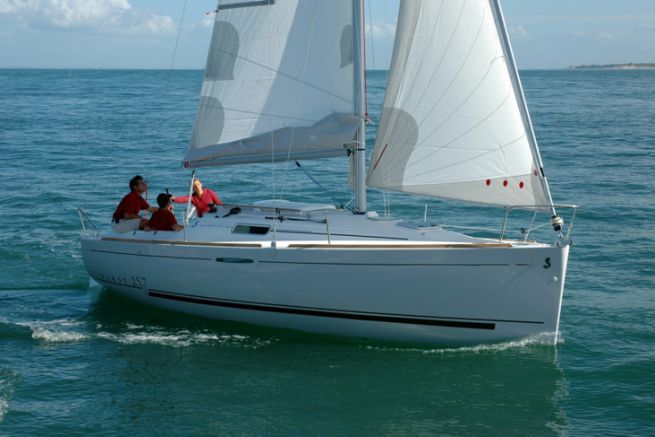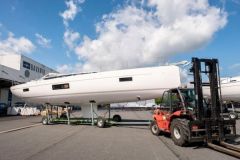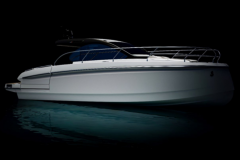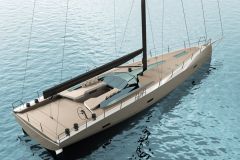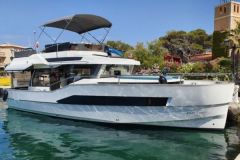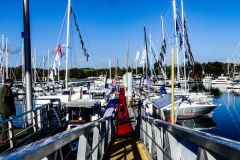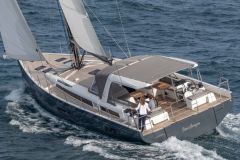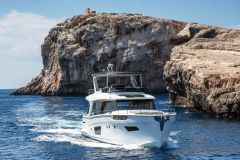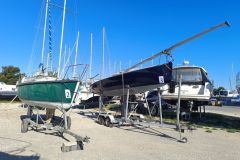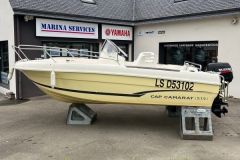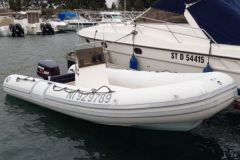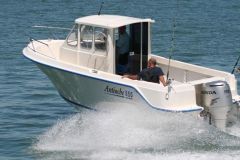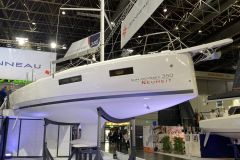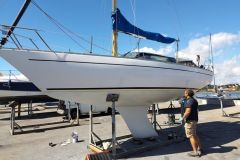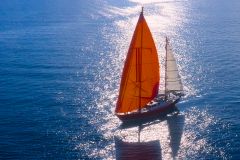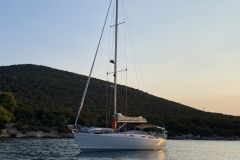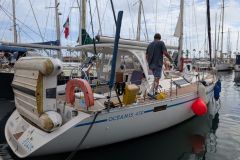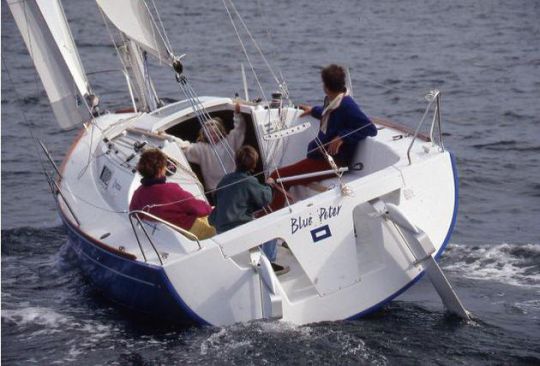
- Price : from 16 000 euros
- Built since 1995 at 1,000 units
Launched in 1995 in the same vein as its little brother the 210, the 260 does without the sacrosanct rear cabin, which has earned it some enmity. However, it has a comfortable and deep cockpit, not to mention two real trunks. The philosophy of the time - also shared by the First 300 - was to offer sailboats that were uncluttered and aesthetically appealing.
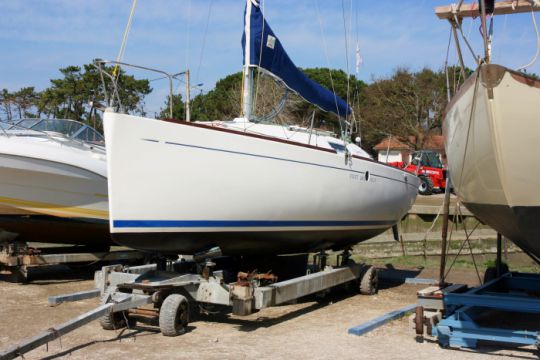
A beautiful hull signed Finot
With its powerful hull and straight bow, the First 260 is lively under sail and performs well at all speeds. Well-prepared with a neat hull, folding propeller and good sails, this model is even competitive in regattas. The First 260 is also seaworthy enough to lose sight of land. Corsica and the Galician coast are yours! Most models are available with the famous Bénéteau canting keel and an inboard engine. But you can find some models with outboard engine and/or keelboat.
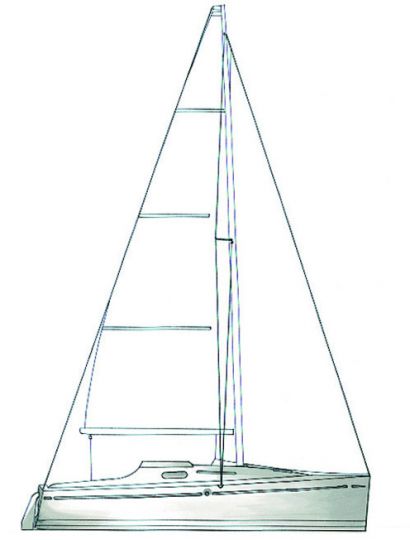
260, 25.7, 25.7 S, 25: always the same boat!
This First 260 has been declined with more complete fittings and more cosy accommodation under the name 25.7 and then 25.7 S. The latest version is the First 25 with its self-supporting rig without backstay - still in the catalog of the world's leading sailboat builder in 2018 - but frankly, there's not much to be gained by buying it new: long live second-hand!
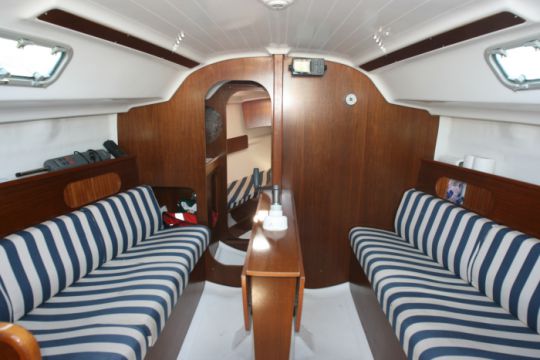
Old-fashioned moving in
To find a front cabin that closes with a door, a toilet right against the sponge, a saloon well positioned in the center, kitchen and chart table near the companionway, but no rear cabin! This is a surprise at a time when all cruisers over 7 m have adopted the aft cabin - thanks to Philippe Harlé's Fantasia. In the end, life on board is pleasant and the cockpit, rather deep, offers comfortable gunwales.
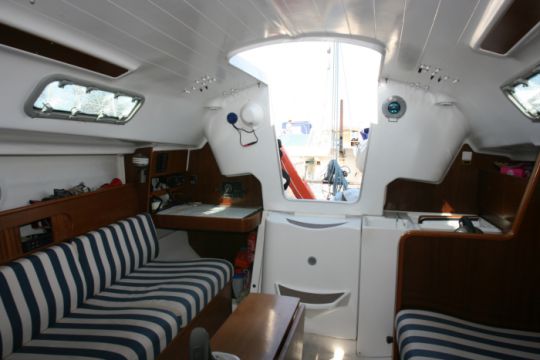
The diagnosis of Bateaux.com
This First is overall robust and ages quite well. The blue gel coat of the first models faded quickly - but it can be repaired with a lot of polish. The first 9 hp inboard engines are a bit underpowered. Prefer the 14 hp of the following models.
The lifting keel mechanism requires regular maintenance: the bronze nut should be changed every five years and the worm gear should be greased regularly. The rudder linkage is also often loose. Nothing serious. And the rudders are glued in a hurry and have a tendency to come off..
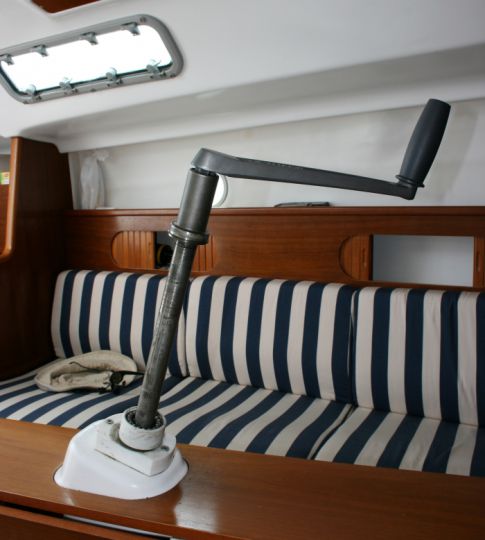
The advantages
- Flattering performance
- Good control in the breeze thanks to the two rudders
- Shallow draft with keel raised
The disadvantages
- Finishes a little early - screwed liston, gluing
- Cannot ground flat without crutches
- A little heavy in very light weather
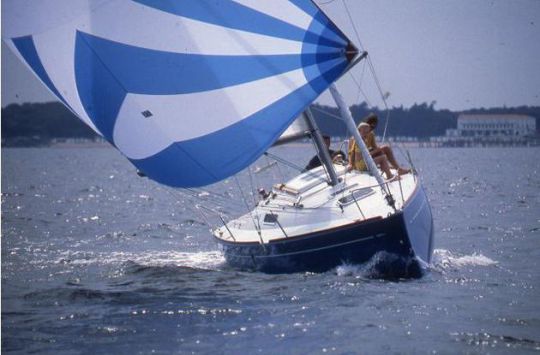
But what is missing?
A rear bunk, of course!
The equivalent today?
The First 25 since it is still offered at the cotalogue in 2018! But also the Maxus 26, more livable, or the Django 770, more exciting to sail... Or the Djinn 7, but which is more like an integral and transportable coastal cruiser.
